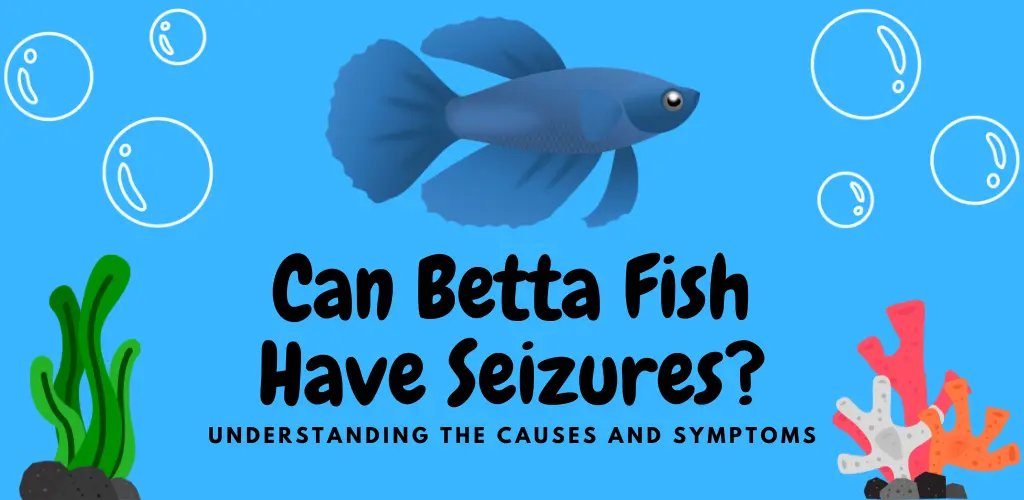Betta Fish, also known as Siamese fighting fish, are a popular species of aquarium fish known for their vibrant colors and distinct fins. However, bettas are also prone to a condition known as swim bladder disorder, which can cause them to have difficulty swimming and maintaining proper buoyancy. In this article, we will discuss How to Treat Swim Bladder in Betta Fish by learning the causes, symptoms, and treatments for swim bladder disorder in bettas.
Causes of Swim Bladder Disorder in Bettas
Swim bladder disorder in bettas is caused by a malfunction of the swim bladder, a sac located in the Fish’s abdomen that helps control its buoyancy. The following are some common causes of swim bladder disorder in bettas:
Overfeeding
Bettas have small stomachs, and overfeeding can cause their swim bladders to become distended. This can happen if Fish are fed more than they can consume or if the food is not appropriate for them.
Constipation
A diet high in protein or low in fiber can cause constipation in bettas, which can lead to swim bladder disorder. The overuse of protein-rich foods and lack of variety in the diet can also cause constipation.
Genetics
Some bettas may be predisposed to swim bladder disorder due to genetic factors. This can happen if the Fish has a genetic defect that causes the swim bladder to malfunction.
Environmental factors
Bettas are sensitive Fish, and changes in water conditions can cause swim bladder disorder. This can happen if the water is too cold, warm, hard, or soft.
Stress
Bettas are sensitive Fish and can easily become stressed by environmental changes. Stress can cause swim bladder disorder by disrupting the normal function of the swim bladder.
Trauma
Bettas may develop swim bladder disorder due to physical trauma, such as injury to the swim bladder or being dropped.
It’s important to note that swim bladder disorder can have multiple causes, and a combination of factors may cause it. It’s also important to consult with a veterinarian or experienced fish keeper to make an accurate diagnosis.
Signs of Swim Bladder Disease in Betta Fish

Physical signs:
- Difficulty swimming: Bettas with swim bladder disease may have difficulty maintaining proper buoyancy and swimming in a straight line. They may also float at the surface of the water, unable to swim down.
- Tilted or bent body shape: A distended swim bladder can cause a tilted or bent body shape in bettas with swim bladder disease.
- Bloating or distension of the abdomen: Bettas with swim bladder disease may have a visibly swollen or distended abdomen.
- Loss of appetite: Bettas with swim bladder disease may lose interest in food and stop eating.
Behavioral signs:
- Listlessness: Bettas with swim bladder disease may appear sluggish and unresponsive.
- Abnormal swimming patterns: Bettas with swim bladder disease may exhibit abnormal swimming patterns, such as swimming in circles or flipping upside down.
- Rapid breathing: Bettas with swim bladder disease may breathe rapidly or gasp for air.
- Isolation: Bettas with swim bladder disease may isolate themselves from other Fish in the tank and hide in the corners of the tank.
It’s important to note that some of these symptoms can also be caused by other conditions, so consult a veterinarian or experienced fishkeeper to make an accurate diagnosis. Additionally, it is important to remember that bettas are sensitive Fish, and changes in water conditions or other environmental factors can cause similar symptoms. Hence, checking the water parameters is important if you suspect swim bladder disease.
How to Prevent Swim Bladder Disease in Betta Fish

Preventing swim bladder disease in betta fish can be achieved by following proper care guidelines and monitoring their diet and water conditions. The following are some tips to prevent swim bladder disease:
Proper feeding
Bettas have small stomachs, so it is important to feed them small, frequent meals rather than large meals. Avoid overfeeding and ensure their diet is well balanced, with a good mix of protein, plant-based food, and other essential nutrients.
Water quality
Maintaining good water quality is essential to the overall health of bettas. Keep the water clean and well-filtered, and perform regular water changes to remove waste and toxins. Test the water regularly to ensure that the pH, temperature, and hardness are within the recommended range for bettas.
Tank size
Bettas are sensitive Fish and need a comfortable environment. Bettas should be kept in tanks at most 2.5 gallons and no larger than 10 gallons. A larger tank will allow for better water quality and temperature control.
Temperature
Bettas are tropical Fish and prefer water temperatures between 76-82°F. Avoid extreme changes in temperature, which can stress the Fish and make them more susceptible to disease.
Stress
Bettas are sensitive Fish, and they can easily become stressed by changes in their environment, such as being overstocked in the tank or being housed with aggressive tankmates. Minimize stress by providing them with a peaceful and comfortable environment.
Regular Check-ups
Regular check-ups with a veterinarian or experienced fish keeper can help detect swim bladder disease early and prevent complications.
Following these tips can help prevent swim bladder disease and ensure that your betta fish are healthy and happy. Remember that it is always better to prevent a disease than to treat it, so be sure to keep a close eye on your betta fish and take action as soon as you notice any signs of illness.
How to Treat Swim Bladder in Betta Fish?
Treatment for swim bladder disorder in bettas will depend on the condition’s underlying cause. The following are common treatments for swim bladder disorder:
Diet modification
If overfeeding or a diet high in protein is the cause of swim bladder disorder, adjusting the betta’s diet can help. Feeding small, frequent meals and increasing the amount of plant-based food in the diet can help.
Epsom salt baths
Epsom salt can help relieve constipation and reduce inflammation in the swim bladder. To give a betta an Epsom salt bath, add 1 tsp of Epsom salt per gallon of water in a separate container. Then, place the betta in the water for 15-20 minutes.
Antibiotics
If there is a bacterial infection in the swim bladder, a veterinarian may prescribe antibiotics.
Surgery
In severe cases, surgery may be necessary to remove a tumor or correct a genetic defect in the swim bladder.
Conclusion
Swim bladder disorder is a common condition in bettas caused by overfeeding, constipation, and genetics. Multiple symptoms are observed for the disease; some include difficulty swimming, floating at the surface, and a tilted or bent body. Treatment options include diet modification, Epsom salt baths, antibiotics, and surgery. With proper treatment, bettas with swim bladder disorder can recover and lead normal lives in the aquarium.
FAQ
Q: How long does it take for a betta fish to recover from swim bladder disorder?
A: The recovery time for a betta fish with swim bladder disorder will depend on the severity of the condition and the treatment used. In some cases, recovery can take a few days to a week, while in more severe cases, it can take several weeks or longer.
Q: Can a betta fish die from swim bladder disorder?
A: If left untreated, swim bladder disorder can be fatal for betta fish. However, bettas can recover and lead normal lives in the aquarium with proper treatment.
Q: Is Swim Bladder Contagious in Betta Fish?
Swim bladder disorder is not contagious in betta fish. Swim bladder disorder is caused by a malfunction of the swim bladder, which can be caused by overfeeding, constipation, genetics, or other factors. It is not caused by a contagious pathogen and cannot be spread from Fish to Fish. However, it’s important to note that poor water conditions and stress can contribute to the development of swim bladder disorder, so it’s important to ensure that the environment is optimal for the Fish and to avoid overcrowding.




Pingback: Guide To Betta Fish Eggs Care - Fertilization To Hatching - Betta Fish Advice
Pingback: How Long Does It Take For Betta Fins To Regrow? - Betta Fish Advice
Pingback: How Long Can A Betta Fish Live Out Of Water? - Betta Fish Advice
Pingback: Why Is My Betta Fish Swimming Fast Back And Forth? - Betta Fish Advice
Pingback: Betta Curved Spine Treatment: Complete Guide